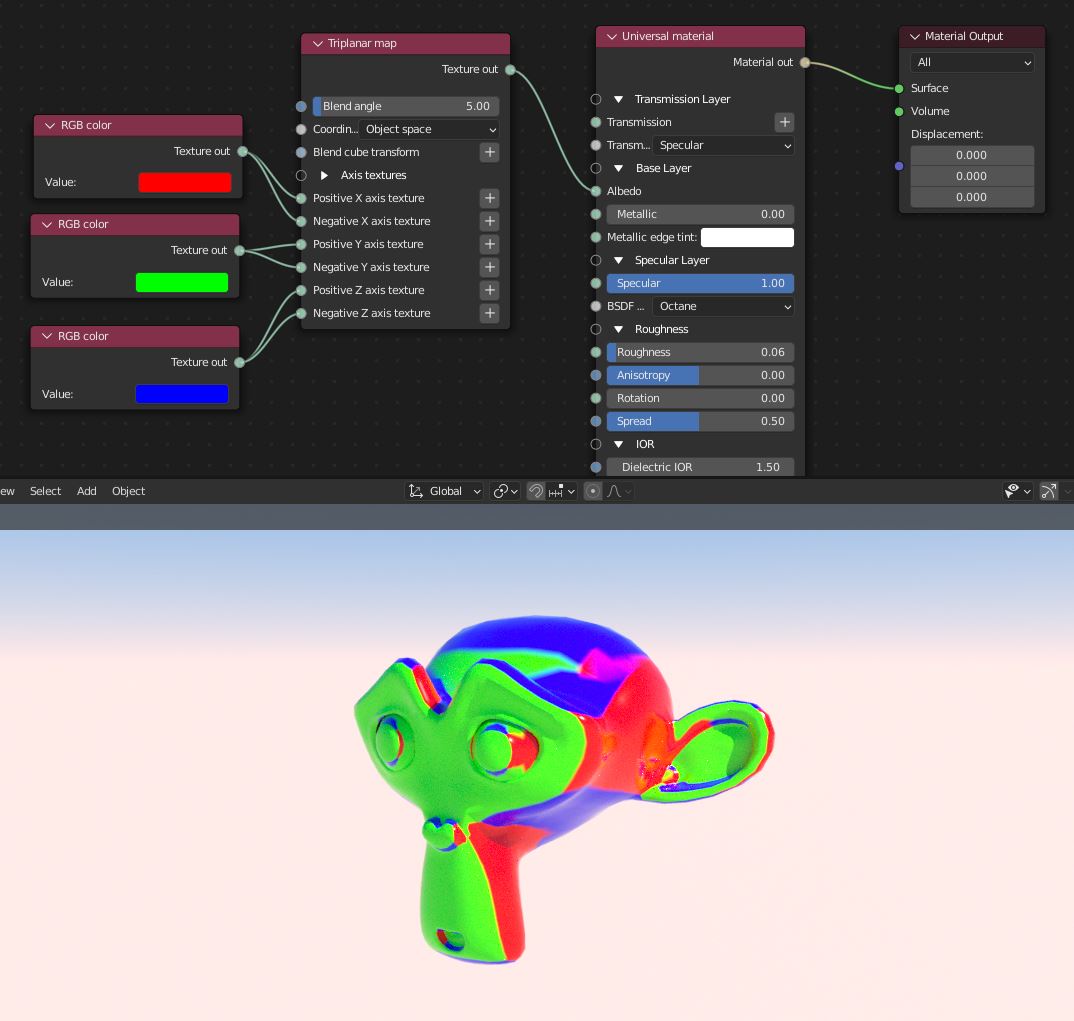
The Triplanar Map texture works in conjunction with a Triplanar projection. The Triplanar projection takes the coordinates in world or object space and it picks the projection axis, depending on the active axis of the Triplanar Map. This gives a quick way to map a texture on any object, and presents the possibility for texture transforms local to each projection axis. The Triplanar Map has six input pins representing the positive and negative x, y, and z planes. The same or different Texture nodes can map to each of these input pins.

Figure 1: The Triplanar Texture node parameters

Figure 2: Triplanar example
It divides a MaterialThe representation of the surface or volume properties of an object. map into six areas corresponding to the x, -x, y, -y, z and -z axis. At first, a Texture covers the entire Object's surface, but the Triplanar mapping confines the Texture's visibility onto the Texture's corresponding axes that are active. Figure 3 shows a comparison of an image without the Triplanar mapping versus one that is plugged into the Triplanar texture's X and Y axis pins.

Figure 3: No Triplanar mapping (left), and with Triplanar mapping (right)
The Triplanar texture has the Blend Angle and Blend Cube Transform parameters, which soften the seams.